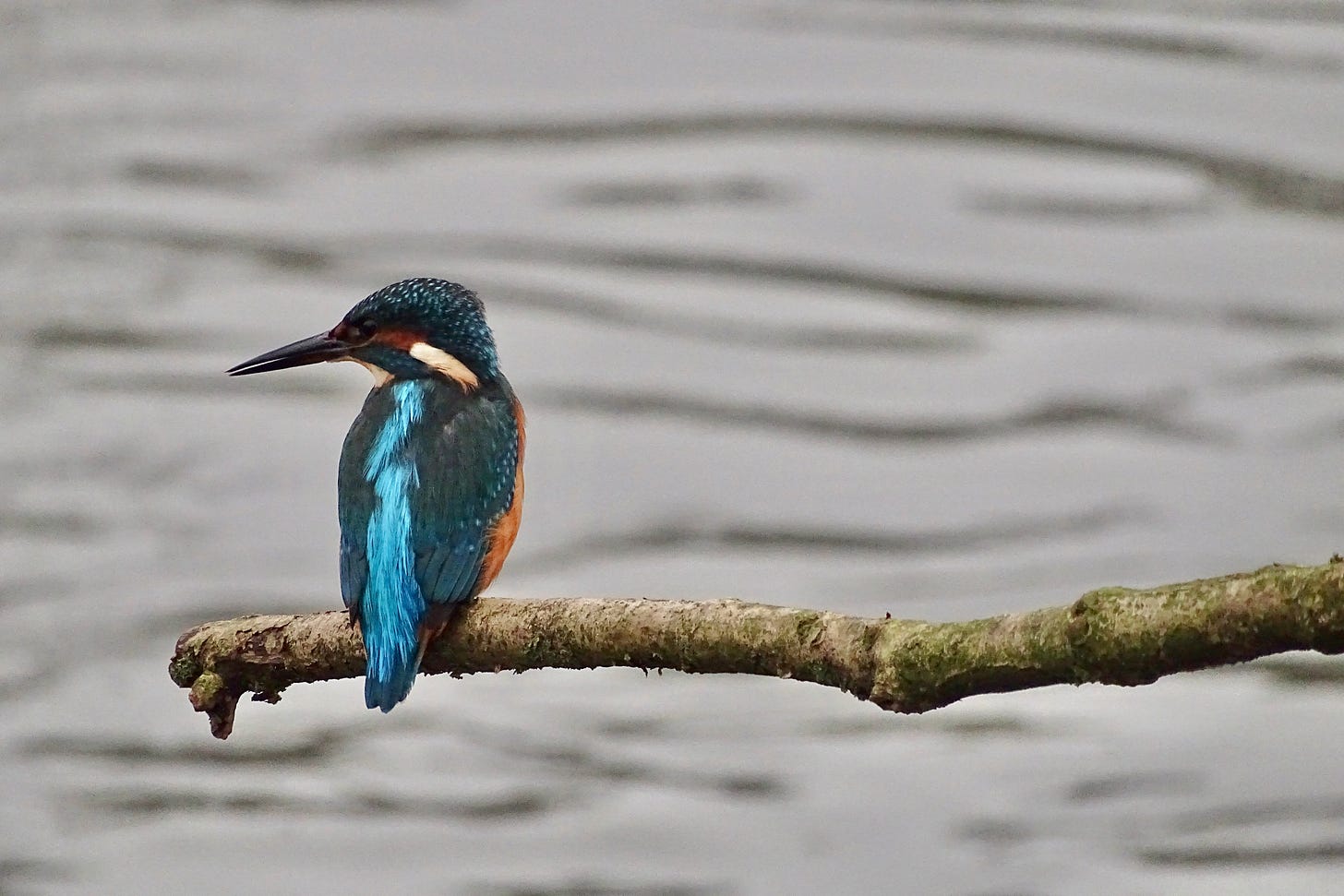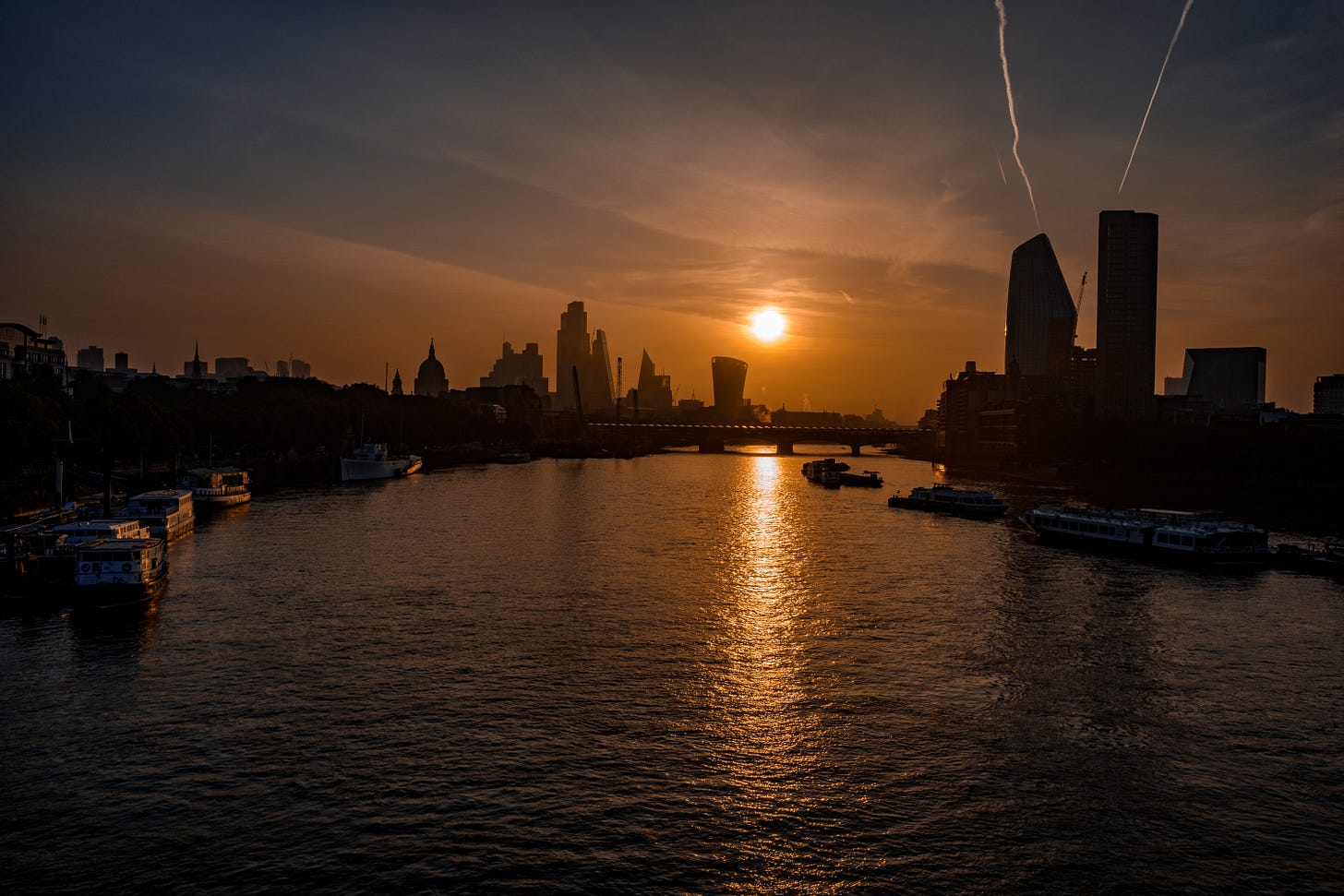The truth behind England’s Brown Unpleasant Rivers: 160 years of crap
England’s rivers are polluted beyond legal limits. A dive into its murky past suggests that sewage spills from leading water companies are responsible.
As world leaders arrived in Glasgow for the COP26 summit in late September, the UK had its bubble burst by a damning internal report on the ecological health of England’s rivers.
This pollution was largely the result of agricultural and industrial run-offs – water from farms and factories which enter rivers through irrigation or rain – and chemicals from household drains. However, half could be traced back to sewage discharges from water companies.
In the days following, the media was choked with stories of poisoned swimmers and sickly wildlife, leaving us all to wonder: Is this such a surprise?
The state of our rivers
‘The State of Our Rivers’ report, conducted by the Environment Agency, was part of a follow-up to a 2016 investigation.
Astonishingly, it revealed that only 14% of England’s rivers were in ‘good ecological condition’ – alongside 65.7% in Scotland, 46% in Wales and 31.3% in Northern Ireland. The study covered wildlife, oxygen levels and chemical pollution, using new sampling methods which tested biological matter extracted from fish and shellfish.

Furthermore, the report found that none were entirely free of chemical pollutants; mercury (a result of pesticide overuse), polyphenyl ether (a dissolvable flame retardant) and P-Phos (a chemical used for waterproofing).
These findings also shed light on neglected government targets, set 20 years ago, which aimed to have three-quarters of England’s water bodies in good condition by 2027.
The main offenders appeared to be sewage treatment facilities and farms, which are legally permitted to release wastewater during bad weather via storm overflows.
Due to population expansion and the effects of climate change, these have exceeded expected limits with 403,171 sewage spills into England’s waterways and seas in 2020 alone – roughly equating to 3.1 million hours of spillages.
These spillages - many of which were unregulated - have caused significant damage to the environment, increasing levels of nitrates in the water, which results in excessive algae growth. This, in turn, reduces oxygen levels and degrades the habitats of existing wildlife.
In response to the report, environment minister Rebecca Pow stated that the government “are absolutely committed to achieving our water quality ambitions,” but also cited the need to “go further and faster on reducing the environmental impact from storm overflows and other sources of pollution including chemicals and agriculture.”
The Great Stink of 1858
River pollution, particularly in urban centres, is hardly a new problem. England’s rivers are historically bad. Really bad.

In fact, one can look back to the River Thames in 1858 to see the effects of sewage pollution in action. Back in the 19th-century, the 200-mile-long river which passes through London was described by Dickens as “a dank, stinking sludge, the scene of murders and crime”. It was essentially an open sewer, transporting all of the city’s unsavoury waste from factories, slaughterhouses, and breweries.
This pollution reached its climax in the particularly hot summer of 1858, which became known as ‘The Great Stink’.
Record temperatures and a lack of rain rendered London unliveable. Concoctions such as chalk lime were poured into the river, scathing caricatures of Old Father Thames were published in the newspapers and letters were members of parliament. But, most of the recipients lived far enough away from the river to escape the smell and the issue was continuously swept under the rug.
It wasn’t until the stench became so overpowering that MPs fled parliament mid-debate, that serious measures were taken.
A solution finally came from Victorian civil engineer Joseph Bazalgette, who designed a sewer system to transport the refuse of London’s rapidly expanding population out of the city. But, after another century of poor urban planning and industrial waste, the stink was back.
The Thames clean-up
In 1950, those unlucky enough to fall into the Thames were sent immediately to the hospital to have their stomachs pumped and very few came out again. Parts of the river were then declared ‘biologically dead’ in 1957, prompting one of the most significant river clean-ups in history.
Today, the Thames is one of a handful of success stories, and, due to a major restoration project by government agencies, NGOs, private companies and community volunteers, it’s considered to be one of the cleanest rivers in the world.
There has been a dramatic increase in the biodiversity of the Thames Estuary and the river now supports 125 species of fish and over 400 species of invertebrates. Meanwhile, seals, seahorses and wading birds have returned to the Tidal Thames.

So, how did this happen?
In the 1960s, new sewage treatment plants were installed and existing systems were updated to prevent spills into the river – enabling more oxygen to enter the water and the ecosystem to recover. This was supported by a ban on industrial discharges into the river and a transition to eco-friendly disinfectants which came with the ecological awakening of the 1970s.
Tackling sewage leaks remains key to the preservation of the river. The Tideway Scheme was designed for this purpose: A 25km ‘super sewer’ is being built at the Falconbrook treatment plant in Wandsworth, which currently spills 700,000 cubic metres of untreated sewage into the river each year.
This further £4.2B update to Bazalgette’s overburdened 150-year-old system would reduce these leaks by 94%.
Thames 21
Community-driven initiatives have also been, and remain, fundamental. At the forefront of these schemes are beach clean-ups where teams of volunteers remove litter that could choke or ensnare wildlife. This also prevents plastic from breaking down into microplastics which wreak havoc on the food chain.
Thames 21, a non-profit organisation, holds regular campaigns and beach clean-ups to reconnect people with the environment. Its aim is “to rebuild the relationship between communities and their rivers; restoring river health and boosting wellbeing and community cohesion in the process.”
But the organisation recognises that this is only a short-term solution. It suggests we redirect our energy to where waste is coming from to create lasting change:
“Thames21 is calling for people, government and business to transform the way we produce, use and dispose of plastic waste.”
The Tyne
The Tyne, the 73-mile river which runs through Northeast England, is another success story. Like the Thames, sections of the river were so corrupted with sewage by the 1950s that the water could no longer support salmon. One contemporary report stated:
“The concentration and semi-stagnation of polluting matter make the upper portion of the estuary virtually into a septic tank.”

However, the installation of sewage treatment plants and community efforts have since restored the river to the best salmon and trout fishing river in England and Wales.
This conservation is continued by the Tyne Rivers Trust, an environmental charity committed to the preservation of the river and its wildlife. Formed in 2004, it currently runs projects between Alston and Keilder to Tynemouth, opening up the river to migrating fish species and educating local farmers on practical solutions to overflows which leak toxic fertilisers and pesticides into the waterways. These solutions include clean and dirty water separation, and the incorporation of hedges and buffer strips to reduce run-off.
The future of our rivers
New data released this week by the Financial Times has exposed that since the privatisation of the sector in 1989, investment in wastewater disposal has been slashed by 20%, despite higher household water bills.
This follows the rejection of a strict anti-sewage amendment by Commons in November. The proposed amendment to the Environment Bill, drafted in the House of Lords, was designed to protect the rivers from sewage released during storm flows.
Whilst a compromise was eventually reached, a number of NGOs have voiced concerns that the 8th November amendment has failed to impose a legal duty on water companies, nor does it propose a set deadline for reducing spills.
One such voice has come from Windrush Against Sewage Pollution, a group of volunteers investigating the pollution of the river Windrush, a tributary of the Thames.
As vocal critics of the current system, WASP blame the water companies for the current quality of England’s rivers, arguing that under current regulations “it’s more profitable [for water companies] to pollute than to act sustainably.”
“In 2020, Thames Water reported profits of £244.6 million after tax. As a whole, the water industry has made around £60 billion since being privatised,” their website states.
“They continue to pollute - both legally and illegally - but there is little incentive to fix the problem. The Environment Agency’s prosecutions ignores many offences.”
What can we learn?
As the Thames and Tyne clean-ups demonstrate, it is possible to restore heavily degraded ecosystems. These success stories provide a blueprint for other degraded waterways: Primarily, the importance of better education on the effects of pollutants, engagement in community-led clean-ups, and in investment wastewater infrastructure.

It's also important to remember that many of England’s rivers have undergone positive change, as ‘The State of Our Waters’ report demonstrates:
‘Most of the progress we have seen has happened because of stronger laws, better practice, public pressure, investment by the water companies, action by environmental NGOs, and effective regulation by the Environment Agency.’
However, improvements made in the 70s and 80s, which oversaw the restoration of major rivers such as the Thames and the Tyne, have been hindered by cuts made by water companies post-privatisation. This has resulted in failure to invest in new sewers, pipes and treatment plants to counteract the increasing pressures of climate change and population growth.
But, these problems are not exclusive to densely populated areas - water pollution has far-reaching consequences. England is home to 85% per cent of the world’s chalk streams, unique habitats that host a number of rare species - from otters and water voles to kingfishers, which are already at risk from rising water levels and extreme weather.
Looking forward, the health of all of our rivers is dependent on new legislation which will close loopholes and oversee the prosecution of water companies responsible for illegal sewage spills. Meanwhile, community enterprises such as WASP must rise to the challenge of preserving their own rivers through educational programmes, community beach clean-ups and lobbying for better regulation of water companies.
Unfortunately, in this regard, it appears that in order to create actionable change, the UK's governing bodies will firstly have to smell the stink.
Visit Windrush Against Sewage Pollution to get involved in their campaign against water contamination.
Al Howard is a staff writer at Ours to Save, interested in space, art and saving the planet. You can follow her on Instagram.



